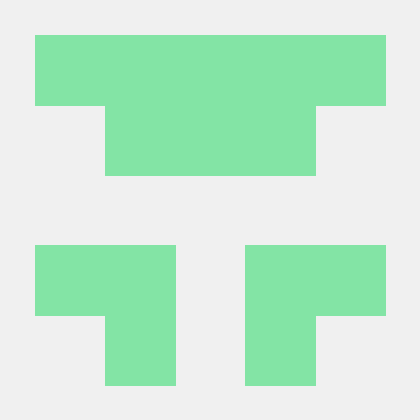@express-document-sdk / TextNode
Class: abstract TextNode
TextNode is an abstract base class representing text displayed in the scenegraph, regardless of whether it's a fully self-contained StandaloneTextNode or one of multiple ThreadedTextNode "frames" in a larger flow. The APIs on TextNode and its TextNodeContentModel allow you to generically work with text without needing to know which subtype you are dealing with.
Note: the visual top-left corner of text is not located at its local (0,0) origin point, so it's easiest to position text using Node.setPositionInParent rather than setting its Node.translation directly.
Extends
Extended by
Accessors
addOnData
• get addOnData(): AddOnData
Get AddOnData reference for managing the private metadata on this node for this add-on.
Returns
allChildren
• get allChildren(): Readonly<Iterable<Node, any, any>>
Returns a read-only list of all children of the node. General-purpose content containers such as ArtboardNode or
GroupNode also provide a mutable ContainerNode.children list. Other nodes with a more specific structure can
hold children in various discrete "slots"; this allChildren list includes all such children and reflects their
overall display z-order.
The children of a Node are always other Node classes (never the more minimal BaseNode).
Returns
Readonly<Iterable<Node, any, any>>
blendMode
• get blendMode(): BlendMode
Blend mode determines how a node is composited onto the content below it. The default value is BlendMode.normal for most nodes, and BlendMode.passThrough for GroupNodes.
• set blendMode(value): void
Parameters
• value: BlendMode
Returns
boundsInParent
• get boundsInParent(): Readonly<Rect>
An axis-aligned box in the parent’s coordinate space encompassing the node’s layout bounds (its boundsLocal, as transformed by its position and rotation relative to the parent). If the node has rotation, the top-left of its boundsLocal box (aligned to its own axes) is not necessarily located at the top-left of the boundsInParent box (since it's aligned to the parent's axes). This value is well-defined even for an orphan node with no parent.
Returns
Readonly<Rect>
Note: The bounding box of an orphaned TextNode may become different after it is placed on a page. It is recommended to use this property only when the node is placed on a page.
boundsLocal
• get boundsLocal(): Readonly<Rect>
The bounding box of the node, expressed in the node's local coordinate space (which may be shifted or rotated relative to its parent). Generally matches the selection outline seen in the UI, encompassing the vector path "spine" of the shape as well as its stroke, but excluding effects such as shadows.
The top-left corner of the bounding box corresponds to the visual top-left corner of the node, but this value is not necessarily (0,0) – this is especially true for Text and Path nodes.
Returns
Readonly<Rect>
centerPointLocal
• get centerPointLocal(): Readonly<Point>
Position of the node's centerpoint in its own local coordinate space, i.e. the center of the boundsLocal box.
Returns
Readonly<Point>
fullContent
• get abstract fullContent(): TextNodeContentModel
The model containing the complete text string and its styles, only part of which may be visible within the bounds of this specific TextNode "frame." The full text content flow may be split across multiple frames, and/or it may be clipped if a fixed-size frame using AreaTextLayout does not fit all the (remaining) text.
Returns
id
• get id(): string
A unique identifier for this node that stays the same when the file is closed & reopened, or if the node is moved to a different part of the document.
Returns
string
layout
• get layout(): Readonly<AutoWidthTextLayout | AutoHeightTextLayout | AreaTextLayout | UnsupportedTextLayout>
Returns
Readonly<AutoWidthTextLayout | AutoHeightTextLayout | AreaTextLayout | UnsupportedTextLayout>
The layout mode of the TextNode "frame."
locked
• get locked(): boolean
The node's lock/unlock state. Locked nodes are excluded from the selection (see Context.selection), and cannot be edited by the user in the UI unless they are unlocked first. It is still possible to mutate locked nodes at the model level using these APIs. However, please consider if modifying a locked node would align with user expectations before doing so.
• set locked(locked): void
Parameters
• locked: boolean
Returns
boolean
nextTextNode
• get abstract nextTextNode(): undefined | ThreadedTextNode
The next TextNode that text overflowing this node will spill into, if any. If undefined and this TextNode is fixed size (AreaTextLayout), any text content that does not fit within this node's area will be clipped.
To get all TextNodes that the text content may be split across, use TextNode.fullContent.allTextNodes.
Returns
undefined | ThreadedTextNode
opacity
• get opacity(): number
The node's opacity, from 0.0 to 1.0
• set opacity(opacity): void
Parameters
• opacity: number
Returns
number
parent
• get parent(): undefined | BaseNode
The node's parent. The parent chain will eventually reach ExpressRootNode for all nodes that are part of the document content.
Nodes that have been deleted are "orphaned," with a parent chain that terminates in undefined without reaching the
root node. Such nodes cannot be selected, so it is unlikely to encounter one unless you retain a reference to a node
that was part of the document content earlier. Deleted nodes can be reattached to the scenegraph, e.g. via Undo.
Returns
undefined | BaseNode
rotation
• get rotation(): number
The node's local rotation angle in degrees, relative to its parent's axes. Use setRotationInParent to
change rotation by rotating around a defined centerpoint.
Returns
number
rotationInScreen
• get rotationInScreen(): number
The node's total rotation angle in degrees, relative to the overall global view of the document – including any cumulative rotation from the node's parent containers.
Returns
number
text
• get text(): string
The text string content which is partially or fully displayed in this TextNode "frame."
WARNING: If a piece of text content flows across several TextNodes, each TextNode's text getter will return
the entire text content string.
Deprecated
- Use the text getter on TextNodeContentModel instead. Access it via
TextNode.fullContent.text.
• set text(textContent): void
Sets the text content of the TextNode.
WARNING: If a piece of text content flows across several TextNodes,
each TextNode's text setter will sets the entire text content string.
Deprecated
- Use the text setter on TextNodeContentModel instead. Access it via
TextNode.fullContent.text.
Parameters
• textContent: string
Returns
string
textAlignment
• get textAlignment(): TextAlignment
The horizontal text alignment of the TextNode. Alignment is always the same across this node's entire text content.
• set textAlignment(alignment): void
Parameters
• alignment: TextAlignment
Returns
topLeftLocal
• get topLeftLocal(): Readonly<Point>
Position of the node's top-left corner in its own local coordinate space, equal to (boundsLocal.x, boundsLocal.y). If the node is rotated, this is not the same as the top-left corner of boundsInParent.
Returns
Readonly<Point>
transformMatrix
• get transformMatrix(): mat2d
The node's transform matrix relative to its parent.
Returns
translation
• get translation(): Readonly<Point>
The translation of the node along its parent's axes. This is identical to the translation component of
transformMatrix. It is often simpler to set a node's position using setPositionInParent than by
setting translation directly.
• set translation(value): void
Parameters
• value: Point
Returns
Readonly<Point>
type
• get type(): SceneNodeType
The node's type.
Returns
visualEffects
• get visualEffects(): readonly VisualEffectType[]
Returns
readonly VisualEffectType[]
The list of visual effects applied to the TextNode.
visualRoot
• get visualRoot(): VisualNode
The highest ancestor that still has visual presence in the document. Typically an Artboard, but for orphaned content, it will be the root of the deleted content (which might be this node itself).
Nodes that are both in the same visualRoot subtree lie within the same "visual space" of the document's structure. Nodes that are in different visual roots have no spatial relation to one another; there is no meaningful comparison or conversion between the bounds or coordinate spaces of such nodes.
Returns
Methods
boundsInNode()
• boundsInNode(targetNode): Readonly<Rect>
Convert the node's boundsLocal to an axis-aligned bounding box in the coordinate space of the target node. Both nodes must share the same visualRoot, but can lie anywhere within that subtree relative to one another (the target node need not be an ancestor of this node, nor vice versa).
Parameters
• targetNode: VisualNode
Returns
Readonly<Rect>
Overrides
cloneInPlace()
• cloneInPlace(): TextNode
Creates a copy of this node and its entire subtree of descendants.
The node must be attached to a page as the copy will be added as a sibling.
Returns
Inherited from
isStandaloneText()
• isStandaloneText(): this is StandaloneTextNode
Helper method to determine if the text is standalone.
Returns
this is StandaloneTextNode
isThreadedText()
• isThreadedText(): this is ThreadedTextNode
Helper method to determine if the text is in a flow.
Returns
this is ThreadedTextNode
localPointInNode()
• localPointInNode(localPoint, targetNode): Readonly<Point>
Convert a point given in the node’s local coordinate space to a point in the coordinate space of the target node. Both nodes must share the same visualRoot, but can lie anywhere within that subtree relative to one another (the target node need not be an ancestor of this node, nor vice versa).
Parameters
• localPoint: Point
• targetNode: VisualNode
Returns
Readonly<Point>
Inherited from
removeFromParent()
• removeFromParent(): void
Removes the node from its parent - effectively deleting it, if the node is not re-added to another parent before the document is closed.
If parent is a basic ContainerNode, this is equivalent to node.parent.children.remove(node). For nodes with other
child "slots," removes the child from whichever slot it resides in, if possible. Throws if the slot does not permit
removal. No-op if node is already an orphan.
Returns
void
Inherited from
rescaleProportionalToHeight()
• rescaleProportionalToHeight(height): void
IMPORTANT: This is currently experimental only and should not be used in any add-ons you will be distributing until it has been declared stable. To use it, you will first need to set the experimentalApis flag to true in the requirements section of the manifest.json.
Changes the height to the given value by visually scaling the entire content larger or smaller on both axes to preserve its existing aspect ratio. See rescaleProportionalToWidth documentation for additional explanation.
Parameters
• height: number
Returns
void
Inherited from
Node.rescaleProportionalToHeight
rescaleProportionalToWidth()
• rescaleProportionalToWidth(width): void
IMPORTANT: This is currently experimental only and should not be used in any add-ons you will be distributing until it has been declared stable. To use it, you will first need to set the experimentalApis flag to true in the requirements section of the manifest.json.
Changes the width to the given value by visually scaling the entire content larger or smaller on both axes to preserve its existing aspect ratio, keeping its top-left corner (topLeftLocal) at a fixed location.
Scaling changes the size of visual styling elements such as stroke width, corner detailing, and font size. Contrast this to resizing operations (such as resizeToFitWithin), which adjust the bounding box of an element while trying to preserve the existing size of visual detailing such as strokes, corners, and fonts.
Rescaling becomes baked into the updated values of fields such as stroke weight, rectangle width, etc. (it is not a separate, persistent scale factor multiplier).
Parameters
• width: number
Returns
void
Inherited from
Node.rescaleProportionalToWidth
resizeToCover()
• resizeToCover(width, height): void
IMPORTANT: This is currently experimental only and should not be used in any add-ons you will be distributing until it has been declared stable. To use it, you will first need to set the experimentalApis flag to true in the requirements section of the manifest.json.
Resizes the node to completely cover a box of the given dimensions, keeping its top-left corner (topLeftLocal) at a fixed location. Nodes with a fixed aspect ratio may extend outside the box on one axis as a result, but nodes with flexible aspect ratio will be resized to the exact box size specified. See resizeToFitWithin documentation for additional explanation.
Parameters
• width: number
• height: number
Returns
void
Inherited from
See
resizeToFitWithin
resizeToFitWithin()
• resizeToFitWithin(width, height): void
IMPORTANT: This is currently experimental only and should not be used in any add-ons you will be distributing until it has been declared stable. To use it, you will first need to set the experimentalApis flag to true in the requirements section of the manifest.json.
Resizes the node to fit entirely within a box of the given dimensions, keeping its top-left corner (topLeftLocal) at a fixed location. Nodes with a fixed aspect ratio may leave unused space on one axis as a result, but nodes with flexible aspect ratio will be resized to the exact box size specified.
Resizing attempts to preserve the existing size of visual styling elements such as stroke width, corner detailing, and font size as much as possible. Contrast with rescaling (such as rescaleProportionalToWidth), which always changes the size of visual detailing in exact proportion to the change in overall bounding box size. This API may still produce some degree of rescaling if necessary for certain shapes with fixed corner/edge detailing to fit the box better.
Parameters
• width: number
• height: number
Returns
void
Inherited from
See
resizeToCover
setPositionInParent()
• setPositionInParent(parentPoint, localRegistrationPoint): void
Move the node so the given localRegistrationPoint in its local coordinates is placed at the given
parentPoint in its parent's coordinates (taking into account any rotation on this node, etc.).
Parameters
• parentPoint: Point
Point in this node's parent's coordinate space to move localRegistrationPoint to
• localRegistrationPoint: Point
Point in this node's local coordinate space to align with parentPoint
Returns
void
Inherited from
Example
Center a rectangle within its parent artboard:
Copied to your clipboardrectangle.setPositionInParent({ x: artboard.width / 2, y: artboard.height / 2 },{ x: rectangle.width / 2, y: rectangle.height / 2 });
setRotationInParent()
• setRotationInParent(angleInDegrees, localRotationPoint): void
Set the node’s rotation angle relative to its parent to exactly the given value, keeping the given point in the node’s local coordinate space at a fixed location within the parent. Disregards any rotation the node may already have had. The angle set here may not be the absolute rotation angle seen on screen, if the parent or other ancestors also have rotation of their own.
Parameters
• angleInDegrees: number
Angle in degrees.
• localRotationPoint: Point
Point to rotate around, in node's local coordinates.
Returns
void
Inherited from
Example
Rotate the rectangle 45 degrees clockwise around its centerpoint:
Copied to your clipboardrectangle.setRotationInParent(45, rectangle.centerPointLocal);



